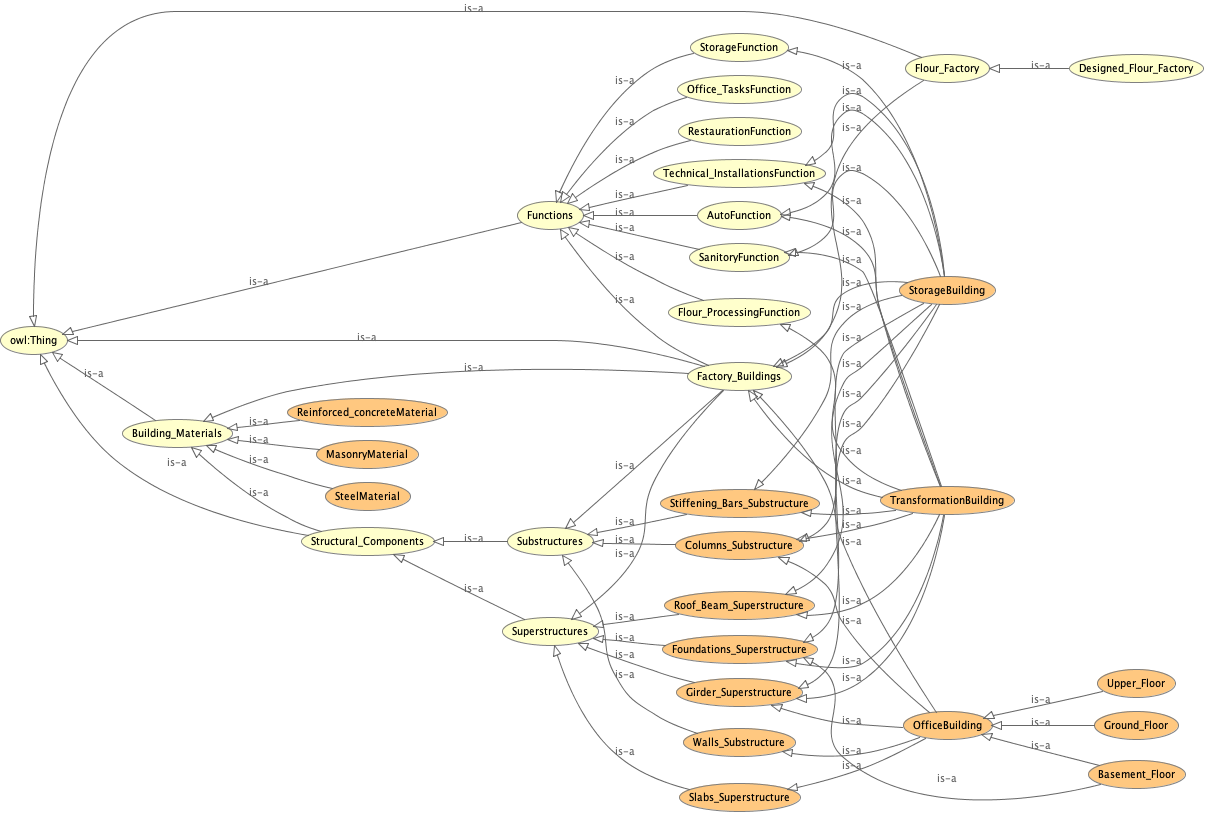Introduction
Let it be bread, cakes, croissants, or any other backed product, most people consume at least one of these products during the day. But all these products can only be made, when flour, the main component is available. This implies, that there is an extremely high demand of flour on the consumption market. As a result, it was then decided to invest in a flour factory, where maze and wheat could be processed and distributed in flour form.
To this aim, an administration building, a factory building, and a warehouse has been planned. These buildings could enable the production of flour to cope with the local demand.
In the following sections some High-performance criteria (HPC) of the product (the buildings) as well as its modelling will be illustrated in an ontological form supported with its parametric model.
Ontological Development
With the help of protégé, an ontology for the complex was been developed. By so doing, a clear hierarchy of the different aspects correlating within this project is being made. Also, the features of the different buildings are being predefined.
The ontology therefore gives a clear and well elaborated scheme to the stakeholders, this is illustrated on the figure below.

Parametric Model
A parametric model was implemented for the flour factory. In this building, the maze and wheat will be processed to obtain the flour. So, the room in the building is especially important. The input parameters chosen are, therefore:
- The length of the building
- The width of the building
- The height of the columns
As we design only the structural components (foundation, columns, beams, bracing), all their dimensions were obtained from the three input parameters given above.
High-Performance Criteria
This production site, mainly done to support the locality, it had two major criteria through which the design could be inspected and evaluated:
1) The material costs. For the construction, material cost was to be least costly possible such that the cost effectiveness (relative to the structural capacities) should be the highest possible.
2)The internal volume: The factory requires a large surface and a good height for the installations and machinery for the flour production.
In the following, the 3D model based on the described parameters shows the geometrical characteristics of the factory: